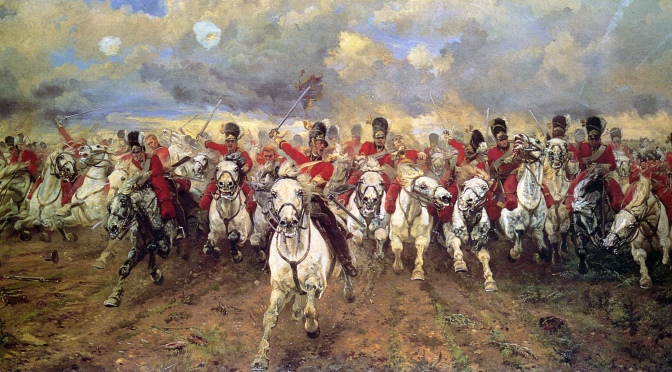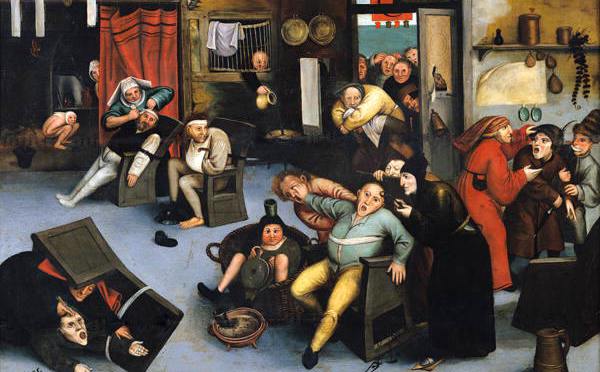Over the past few years, I have been exploring the art history of teaching on this blog, sharing some of my favourite pieces of artwork across various topics within education. You can view my past blogs on these topics here:
An art history of school inspections
An art history of back to school
In this blog, I will be exploring another area that has proved a rich vein for artists throughout time: the inset day. Let’s take a look at how this topic has been approached by artists through the years.

One of my favourite modern pieces is Patrick Caulfield’s 1969 classic ‘I don’t have to teach tomorrow… I might as well finish the bottle tonight’, which depicts the preparation teachers might go through the evening before an inset day. Other works around this theme include Pauline Boty’s ‘So What if This Film Starts at 10pm? I’ve Got Inset Tomorrow’ (1963) and Andy Warhol’s ‘Lie-in!’ (1967).
This kind of preparation continues into the next morning, as teachers take the opportunity of staff inset to dress casually for the day. The work below is a diptych by August Sander in 1929, titled ‘Inset day outfits’.


These contrasting photographs are beautifully observed, the artist depicting both P.E. staff and classroom teachers from the school’s faculty. Sander plays with the assumptions of the layperson here – they might assume that the P.E. staff are on the left and the classroom teacher is on the right. Of course, as those in schools all know, inset day is the one day of the year where all the male classroom teachers wear shorts and the P.E. staff wear long trousers – both experiencing a sense of liberation that they crave every other day of the year.
Once the inset day begins, teachers might have the option to sit in groups of their choice, or they might face the prospect of being made to work in groups that have been selected for them.

Thomas Struth’s 1989 photograph ‘This is the Group We Have Been Put In and We Are Really Happy About That’, shows an enthusiastic group of teachers really getting stuck in to working with the group into which they have been selected. This piece invites the viewer to really look at the faces of each of the group members to see their deep joy.
Once work begins within the group, staff will need to feed back their discussions and ideas on the subject matter of the training.

Ellsworth Kelly’s 1976-7 print ‘Write Your Ideas on a Post-it® and Stick Them it the Wall’ depicts the staple method of feedback used at all inset. The artist deliberately leaves the sticky notes blank, allowing the viewer to imagine their own feedback as they experience the painting. Critics note is that the central Post-it® note is black, and thus any writing on this note will be illegible to the reader: is the artist suggesting that your feedback won’t actually be read? Or is he suggesting that your true thoughts are hidden? What other interpretations might we make of this?
It may be that the inset training requires teachers to be creative in their feedback. Below are two examples portraying a common method of creative feedback from the past, in which teachers have been given some random objects to arrange in a way that represents their response to the subject matter. In Jean Tinguely’s 1970 sculpture ‘My Pedagogy’, the artist depicts a teacher who has been asked to present what pedagogy means to them. In this piece, there is a description alongside it that reads: “Pedagogy is a series of tools that are in balance but are also simultaneously in a state of chaos”. Below that, Bruce Lacey’s ‘This is What Teaching Means to Me’ (1966) also shows how easy it is for a teacher to put some random junk together and then come up with a post-hoc rationalisation that it represents something profound when asked. The description alongside this piece reads: “I dunno, summink about support and helping hands and that?”


An inset day may also require staff to get up out of their seat and do something interactive as it is often assumed by the trainer that teachers are all extroverts who wish to make public displays of themselves at all times. Liu Bolin’s work ‘Please, Please Don’t Make Me Do This’ (2018) portrays the a teacher in the moment they literally attempt to blend into the background so that they don’t have to get involved in something that makes them uncomfortable. If you look very carefully at the piece, you can actually see the teacher in the centre, hiding in plain sight from the trainer, who has just asked him to sing and clap along to a song, or make some form of physical contact with the person next to him, or perhaps even something as upsetting as standing up for a moment.

Below we can see Eric Gill’s representation of the holy grail of inset: having an external speaker come in to present to the staff. You can see the reverence from the staff as they hang on every word of this guru, who they’ve followed on social media for ages and have finally got the chance to hear speak in person. Critics have noted how the teacher depicted at the far end of the second row has a slightly dipped head, reflecting their disappointment at the revelation that the guru’s social media profile picture is infinitely more flattering than they appear in person and was probably taken five years ago, before the mounting sleepless nights and all-you-can-eat buffet breakfasts in Travelodges started to show.

One of my favourite pieces is Linder’s photomontage piece from 1976, ‘Oh good – that Ken Robinson video again’, a punk-era work that asks the viewer to think deeply about the media content we consume in schools.

During inset day there is often a free lunch put on for staff in the canteen at a set time of the day. Below, we can see Lady Butler’s 1881 painting, ‘The Charge of the Lunch Brigade’, which depicts the moment that one department decides to make their way to the canteen a bit earlier than the designated lunchtime in order to get served first, only to realise all of the other departments have done exactly the same thing. We can see the Head of Humanities, out in front in the centre of the painting, shouting “It’s fish and chips!” as he nears the canteen and gets his first glimpse of the food. Meanwhile, those behind try to hustle towards the front whilst simultaneously trying to maintain polite relations with their colleagues in other departments.

A legend often repeated with regards to staff training is that of inset bingo, a game in which staff members have individual bingo cards full of common buzzwords in education that they are supposed to mark off from their card if they are mentioned by the speaker. Perhaps the most famous painting of all time, below, is Leonardo da Vinci’s ‘Lotto di cazzate’ (Italian: “buzzword bingo”), which deals with the moment someone at the table has a winning card. Critics have often debated the sitter’s enigmatic smile and the reasons behind it, but art historians have recently uncovered diaries from da Vinci that tell us that “the teacher in question has just won the game of inset bingo and is trying to hide her delight and, at the same time, maintain a professional demeanour in front of the speaker and her line manager – this conflict results in her enigmatic smile, a seemingly insignificant feature of the painting which I’m pretty sure critics won’t pay much attention to in the years to come”.

I hope you have enjoyed this little voyage through some of the artists who have depicted inset day throughout history. Until next time!









